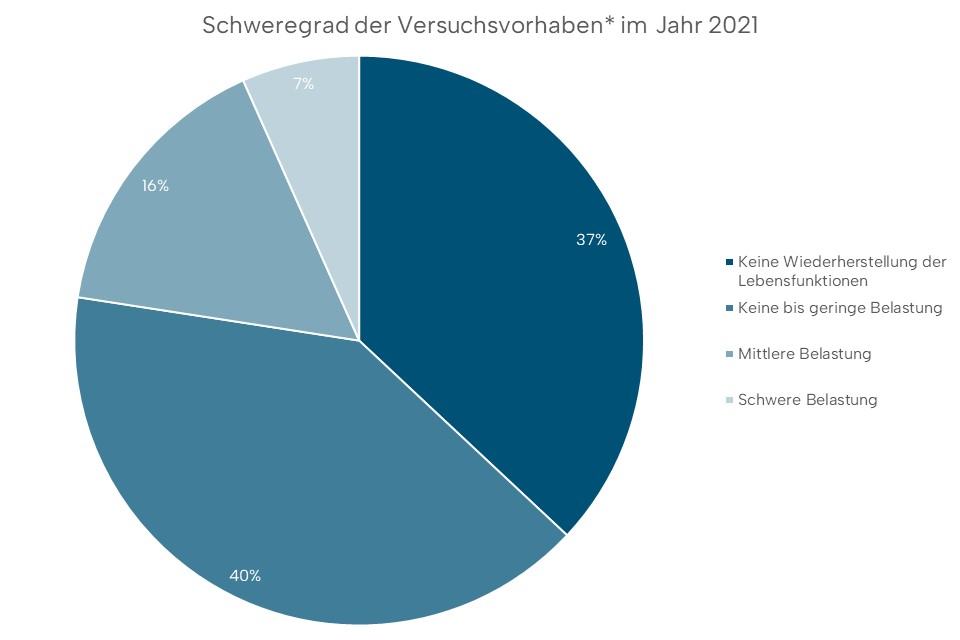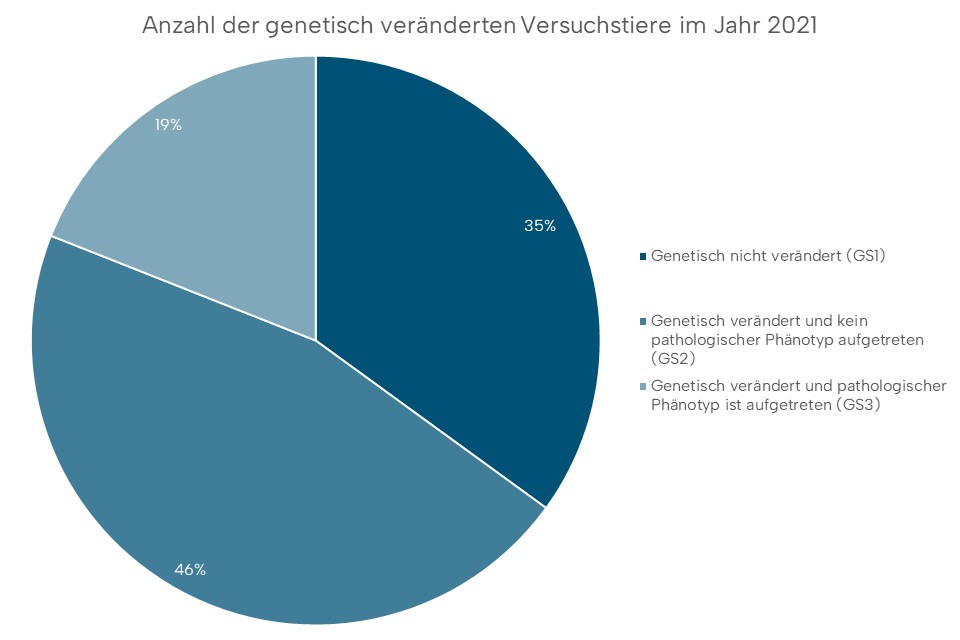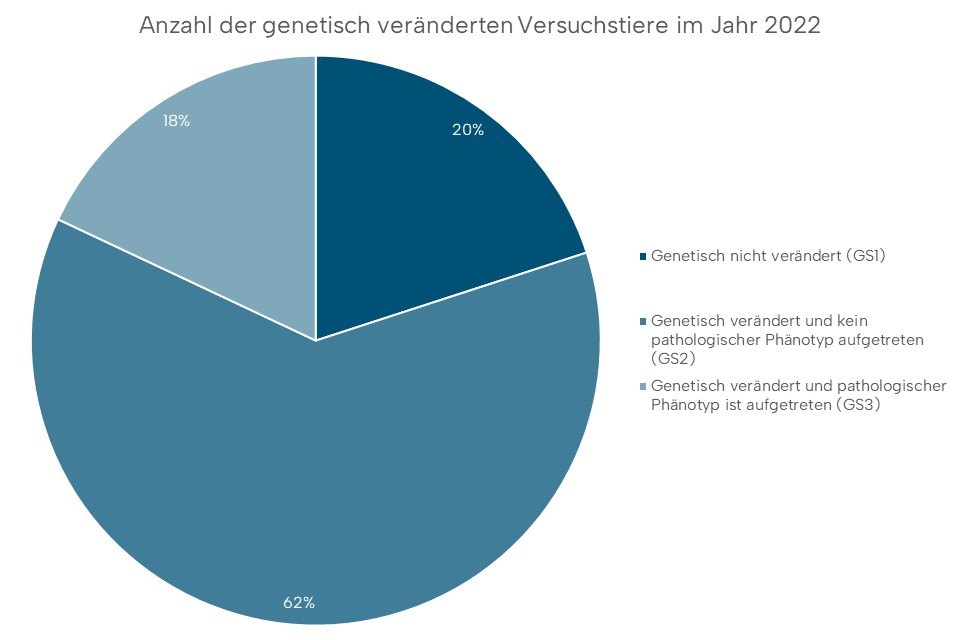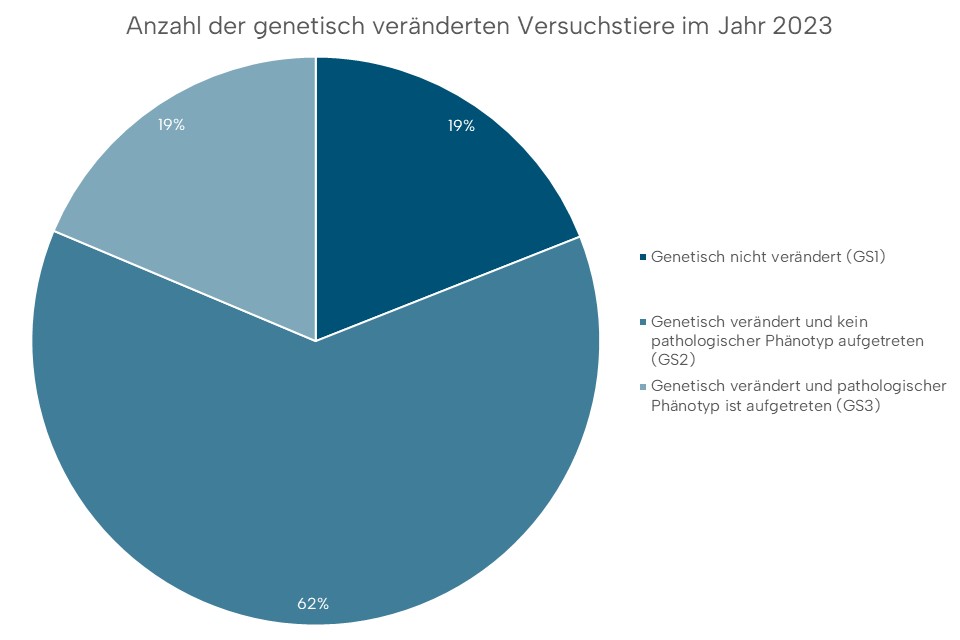Figures and numbers
The following diagrams provide an overview of the species and number of animals used for scientific purposes at the University of Cologne. The available data were collected in the course of the annual animal number report in accordance with the Experimental Animal Reporting Ordinance.
The chart shows the total number of lab animals used annually at our university from 2021 to 2023. The exclusive killing of animals according to Section 4 or Section 7 of the Animal Welfare Act (TierSchG) during this period is indicated, too. The lower numbers of laboratory animals in 2021 are most likely due to the coronavirus pandemic and the resulting reduced research activity.
The diagram shows the number of animals killed at our university in the years indicated, broken down by animal species, on the basis of Section 4 or Section 7 of the Animal Welfare Act (TierSchG).
Other animal species are: rats, pigs, naked mole rats.
2021: A total of 58,086 animals were used for experiments. The majority were mice (40,754). In addition, 16,744 fish, 529 rats, 53 pigs and 6 naked mole rats were used.
2022: A total of 90,548 animals were used. The majority were mice (70,096). In addition, 19,796 fish, 651 rats, 72 pigs and 23 naked mole rats were used.
2023: A total of 76,728 animals were used. The majority were mice (61,568). In addition, 14,731 fish, 367 rats, 14 pigs and 48 naked mole rats were used.
The diagram shows the killings of animals at our university on the basis of Section 7 of the Animal Welfare Act (TierSchG) in the years indicated, broken down according to the intended use.
According to the research focus of the University of Cologne, the main purpose is basic research, which was over 50 percent in 2021 and around 70 percent in 2022 and 2023.
Severity of experimental projects (animal testing and killing for scientific purposes) 2021–2023
The diagrams show the animals killed at our university in the years indicated on the basis of Section 7 of the Animal Welfare Act (TierSchG), broken down by severity.
According to the Laboratory Animal Welfare Ordinance (TierSchVersVO), animal tests are classified according to severity into the following four severity levels:
‘Non-recovery’:
Procedures which are performed entirely under general anaesthesia from which the animal shall not recover consciousness shall be classified as ‘non-recovery’.
An example at our university is the killing of animals under anaesthesia for further microscopic examination of the organs (cardiac perfusion fixation).
‘Mild’:
Procedures on animals as a result of which the animals are likely to experience short-term mild pain, suffering or distress, as well as procedures with no significant impairment of the well-being or general condition of the animals shall be classified as ‘mild’.
An example of ‘mild’ severity level at our university is the marking of mice for individual labelling by means of ear piercing. ‘Moderate’:
Procedures that are unpleasant according to human judgement are classified as ‘moderate’. Both the well-being and the pain of the animal are taken into account as far as possible. Also, procedures that cause long-lasting mild pain are classified as ‘moderate’.
An example at our university is the repeated injection of drugs. This can also mean regular administration of a painkiller.
‘Severe’:
These are procedures which are likely to cause severe pain, severe suffering or distress in the animals as well as procedures which are likely to cause severe impairment of the well-being or general condition of the animals. Even if a procedure only causes moderate pain, moderate suffering or distress, but this lasts for a long time, it is assigned to this severity classification.
An example of a ‘severe’ procedure at our university is the targeted triggering of tumours that can spread (metastasize) in order to develop new treatment strategies for humans.
Number of genetically modified lines 2021–2023
The diagrams show the animals killed at our university in the years indicated on the basis of Section 4 or Section 7, broken down according to the genetic background of the laboratory animals.
At our university, mainly (approx. 80%) animals without pathological phenotype are used (genetically non-modified and genetically modified). This means that the animals do not show any disease due to their genetic modification. Examples of animals with a pathological phenotype at our university: animals that, due to their genetic modification, show the same diseases as humans, so that they can be used to develop personalized therapies.





